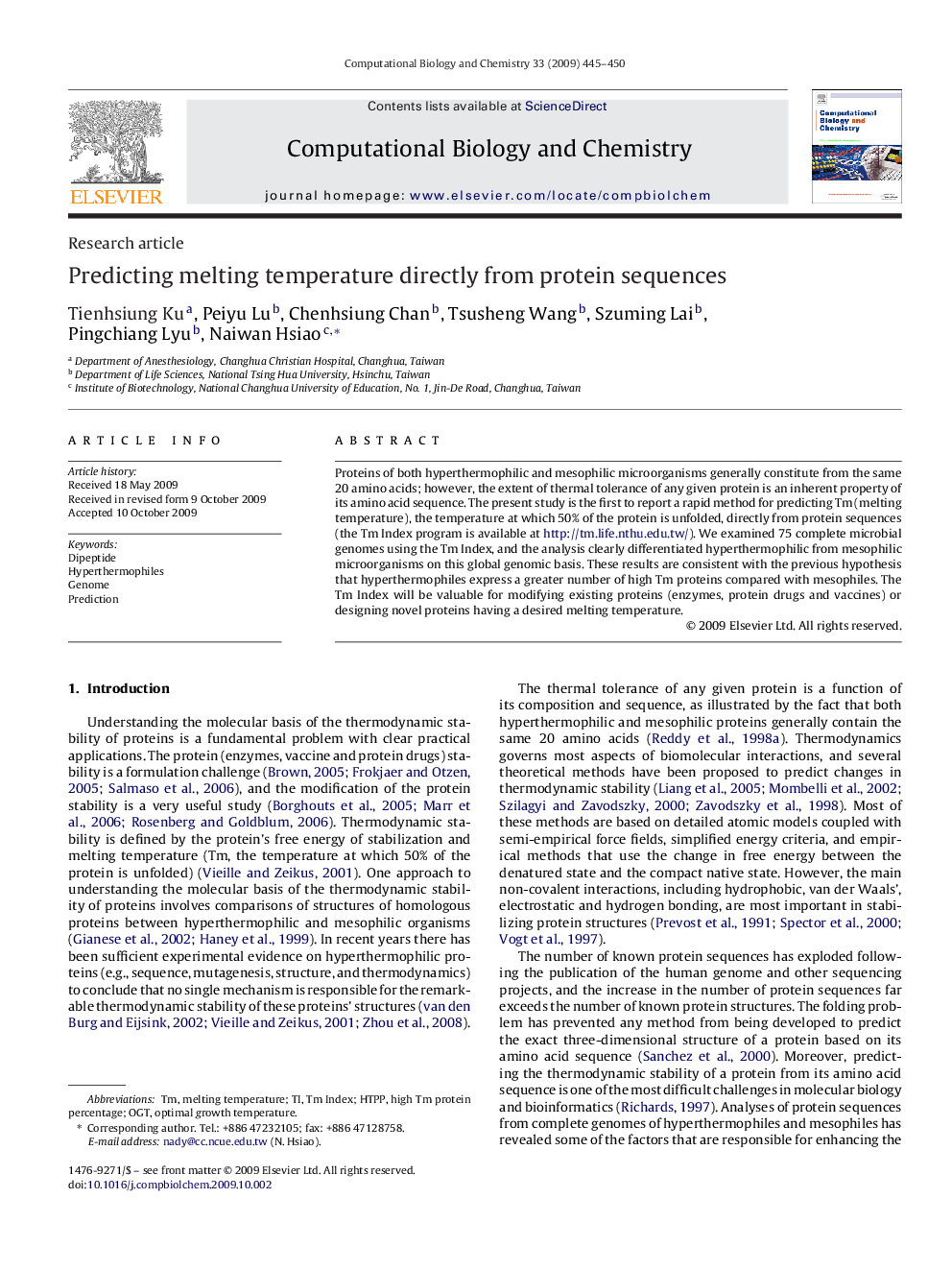| Article ID | Journal | Published Year | Pages | File Type |
|---|---|---|---|---|
| 15273 | Computational Biology and Chemistry | 2009 | 6 Pages |
Proteins of both hyperthermophilic and mesophilic microorganisms generally constitute from the same 20 amino acids; however, the extent of thermal tolerance of any given protein is an inherent property of its amino acid sequence. The present study is the first to report a rapid method for predicting Tm (melting temperature), the temperature at which 50% of the protein is unfolded, directly from protein sequences (the Tm Index program is available at http://tm.life.nthu.edu.tw/). We examined 75 complete microbial genomes using the Tm Index, and the analysis clearly differentiated hyperthermophilic from mesophilic microorganisms on this global genomic basis. These results are consistent with the previous hypothesis that hyperthermophiles express a greater number of high Tm proteins compared with mesophiles. The Tm Index will be valuable for modifying existing proteins (enzymes, protein drugs and vaccines) or designing novel proteins having a desired melting temperature.
